Most young-earth creationist scientists accept that there is a predictable order to the fossil record. However, some creationists have found this difficult to accept. So instead, they have tried to find evidence that fossils of modern types of lifeforms are mixed in with more ancient fossils, like those from dinosaurs. This article will examine one particular example we will call the “Jurassic beaver” hypothesis.
The views expressed in this article reflect those of the author, and not necessarily those of New Creation.
At New Creation, we believe that the events and timeline described in the Book of Genesis are the best explanation for the scientific evidence in the world around us. However, many popular arguments used in favor of this perspective often fall scripturally or scientifically short. Meanwhile, many critiques from our opponents also misunderstand the raw data or our young-earth history model. Interestingly, fossils are a favorite topic of both parties. This article marks the first in an intermittent series we are calling Fossil Whoops. We will address common fossil-related misconceptions and explain why they do not hold up. We also aim to provide a more accurate, Genesis-friendly understanding of the subject.
This Fossil Whoops focuses on a little extinct animal called Castorocauda, discovered in Jurassic rock layers in China in 2006.1 If this creature is truly a beaver, it would be an extraordinary find. Traditionally, most mammals from dinosaur-bearing fossils are small and shrew-like. Yet recent discoveries, like Repenomamus, a predator of small dinosaurs, and Volaticotherium, a gliding mammal, show a surprising diversity of Mesozoic mammals. While these creatures don’t belong to modern mammal groups, they reveal that dinosaur-neighboring mammals came in many more shapes and sizes than once thought. So is Castorocauda really a beaver?
Leave It To the Jurassic Beaver
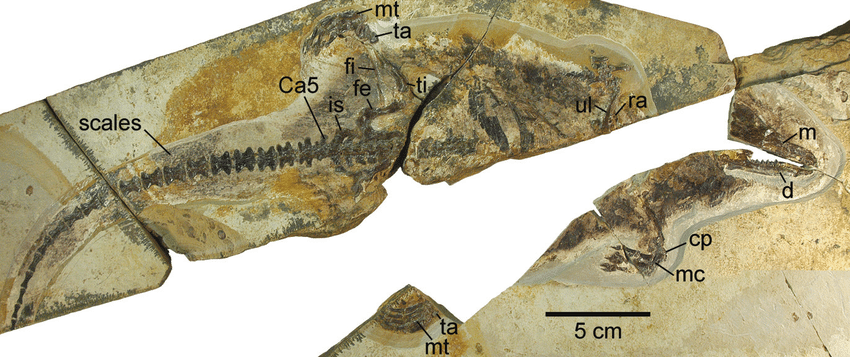
Hailing from the Middle Jurassic Jiulongshan Formation of Inner Mongolia, Castorocauda was about the size of a platypus. Its fossils remain in very excellent condition. This gives scientists a good idea about what it looked like and how it may have behaved. Its body was covered in fur, just like many mammals today. Its broad, flattened tail was covered in a scale-like texture, not unlike the tail of a beaver. Fossilized remnants of skin between the toes of its hind feet suggest they were webbed. This is a very useful trait for an animal spending much of its time in the water, as scientists believe Castorocauda did. In many ways, this creature probably behaved much like a modern platypus. It would have spent much of its time in the water, occassionally crawling back onto dry land for a break.
Where Did the “Jurassic Beaver” Hypothesis Come From?
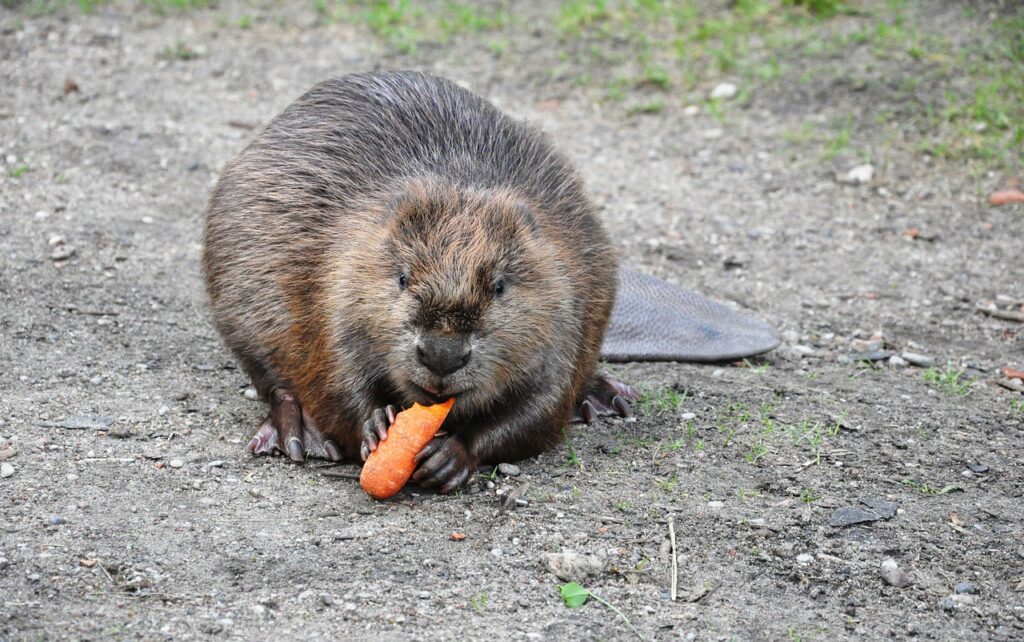
The announcement of Castorocauda’s discovery hit the public in the form of popular science articles. These headlines dubbed it the “Jurassic beaver.” This has led some people to suggest that this animal did not merely have some beaver-like characteristics. Rather, they argue that the animal itself was beaver-like.2 Or even actually a beaver, not unlike the ones building dams, chewing down trees, and swimming in our ponds today.3 The discovery of a modern beaver in Jurassic layers alongside dinosaurs would be an unprecedented discovery.
Prior to this, researchers have only found beavers in the uppermost portion of the fossil record. This section of the fossil record is called the Cenozoic. It is characterized by all of our modern types of mammals. Most young-earth paleontologists think these modern mammal fossils formed after the Flood, while those of dinosaurs and other animals buried with them formed during the Flood.
Some creationists have jumped onto the discovery of this “Jurassic beaver” because they think it disproves the theory of evolution.4 After all, if beavers are present in the dinosaur-bearing rock layers, then they clearly have not changed since then.
Problems with the “Jurassic Beaver” Hypothesis
There is a significant issue with the “Jurassic beaver” hypothesis. All beavers, including extinct species, belong to the family Castoridae. Creation biologists consider this a single created kind that survived the Flood on Noah’s Ark. Later, it diverged into multiple species.
Advocates of the “Jurassic beaver” hypothesis suggest that Castorocauda was a species within the beaver created kind that lived before the Flood. However, this assumption faces a major problem.
Something to Gnaw On
Beavers are classified into the order Rodentia. There are some 2,000 species of rodents alive today, which in turn are divided into around 30 families. This means that over 40% of all known mammal species are rodents! Rodents come in as many shapes and sizes as you can imagine. The pygmy mouse barely tips the scale at 5 grams. Meanwhile, the capybara is the largest living rodent, weighing about 77 to 146 pounds (that is the size of a Labrador Retriever!). And in between these two extremes exist squirrels, chipmunks, rats, prairie dogs, porcupines and countless others.
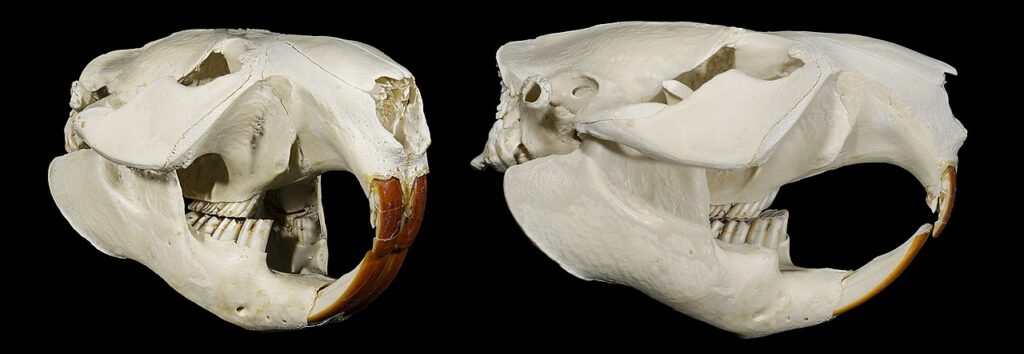
Regardless of all the various forms rodents can take, one feature they all share in common is that their jaws are made to gnaw on things. Every rodent on the planet has four chisel-shaped teeth, called incisors, at the front of the mouth. Two are on the top jaw, and two on the bottom jaw. These teeth never stop growing as long as the animal lives. They make it possible for rodents to gnaw through wood and other hard materials. Unlike us, rodents have no canine teeth. But behind the incisors, all rodents have a gap (where the cheeks are), called the diastema. This is followed by flat premolars and molars they use to grind their food.
Beavers possess all of these features, which is why scientists classify them as rodents. Is Castorocauda also a rodent? More specifically, is it a beaver or beaver-like animal?
Is Castorocauda a Rodent?
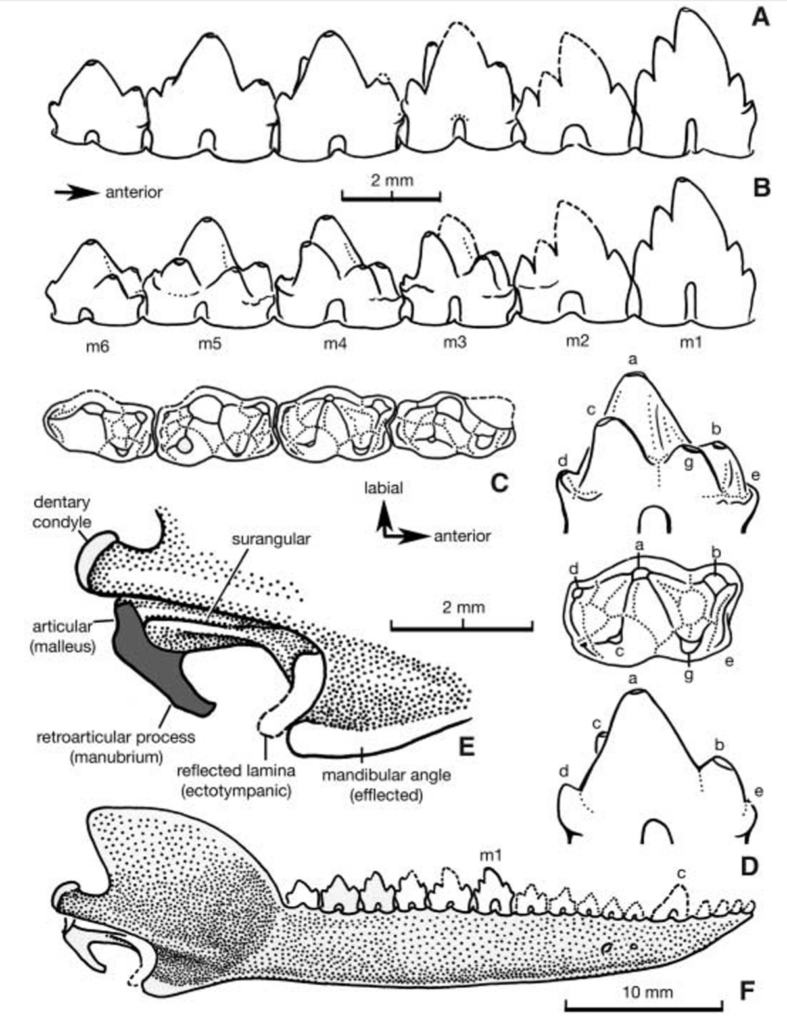
To answer this question, we must peer into the mouth of a Castorocauda. While the little creature is sadly no longer living among us, its fossil skull is very well-preserved. So are its chompers. While Castorocauda did have incisors, they are not enlarged or chisel-shaped and therefore are unsuitable for gnawing on hard materials like wood. Canines are present in the mouth (which rodents do not have), and the molars are pointed, backwards-curving, interlocking teeth. This type of tooth is common in animals that have to catch and hold onto slippery prey, like modern seals and extinct cetaceans such as Pakicetus. God designed these teeth to shear and grind their food. This tooth arrangement suggests Castorocauda was also after fast, slippery prey, most likely fish and water-dwelling invertebrates.
Castorocada does not possess the telltale features of beavers and other rodents. This means that not only was it not a beaver or beaver-like animal, it was not even a rodent. While God made rodent jaws and teeth for gnawing on wood and other materials, He made Castorocada’s jaws and teeth for shearing and grinding slippery food.
But What About That “Beaver’s” Tail?
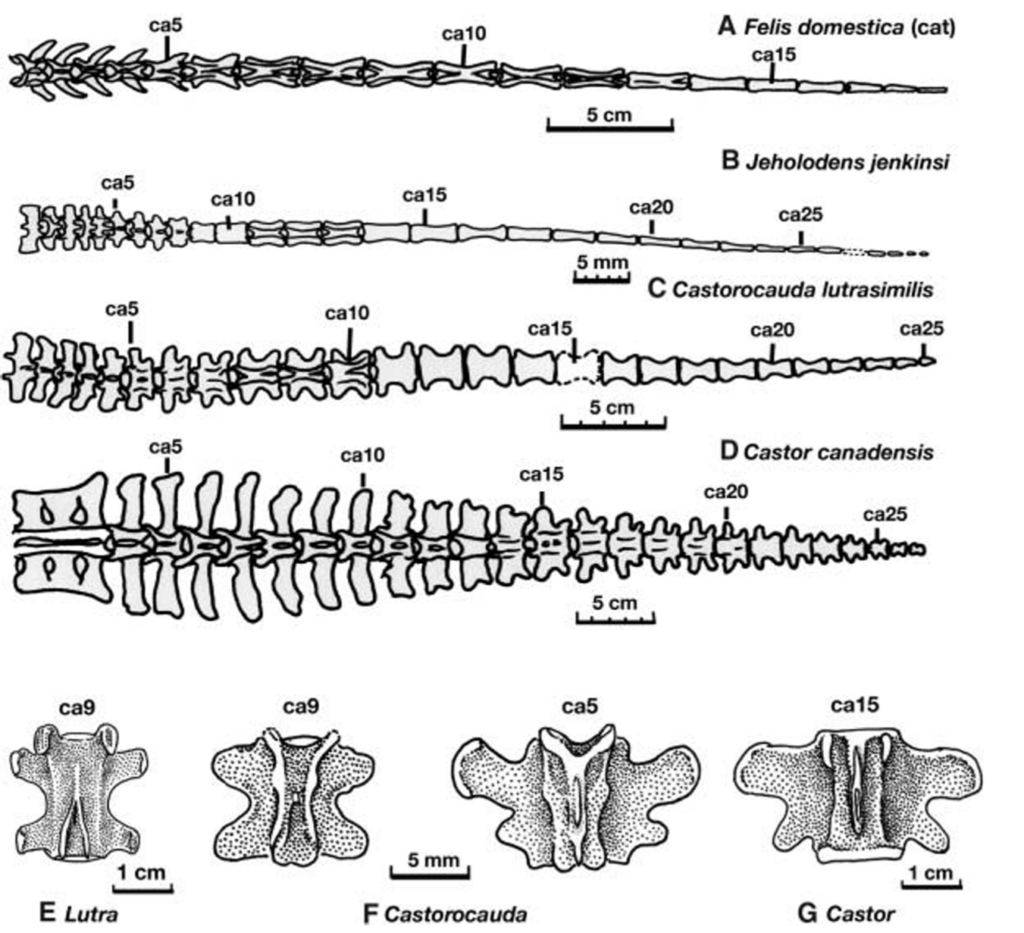
The go-to body part advocates of the “Jurassic beaver” hypothesis point to is Castorocauda’s flat tail. Even the discoverers of this animal acknowledge the beaver-like appearance of its tail. Fossil skin impressions even show that it was covered in a similar scaly texture. Surely this is proof that Castorocauda is a beaver.
However, a closer look at the bone structure of Castorocauda’s tail reveals this not to be the case. This image on the right compares the tail bones of Castorocauda (C) with those of a domestic cat (A), an extinct mammal called Jeholodens (B), and a modern-day American beaver (D). While Castorocauda’s tail certainly does have some similarities to those of the American beaver, the beaver’s tail bones are much, much wider. And when examining the individual tail bones themselves, the researchers noticed they are very similar to those of a modern river otter.
It appears that even the most “beaver-like” body part of Castorocauda is not quite as beaver-like as thought upon first glance.
Is Castorocauda Even a Mammal?
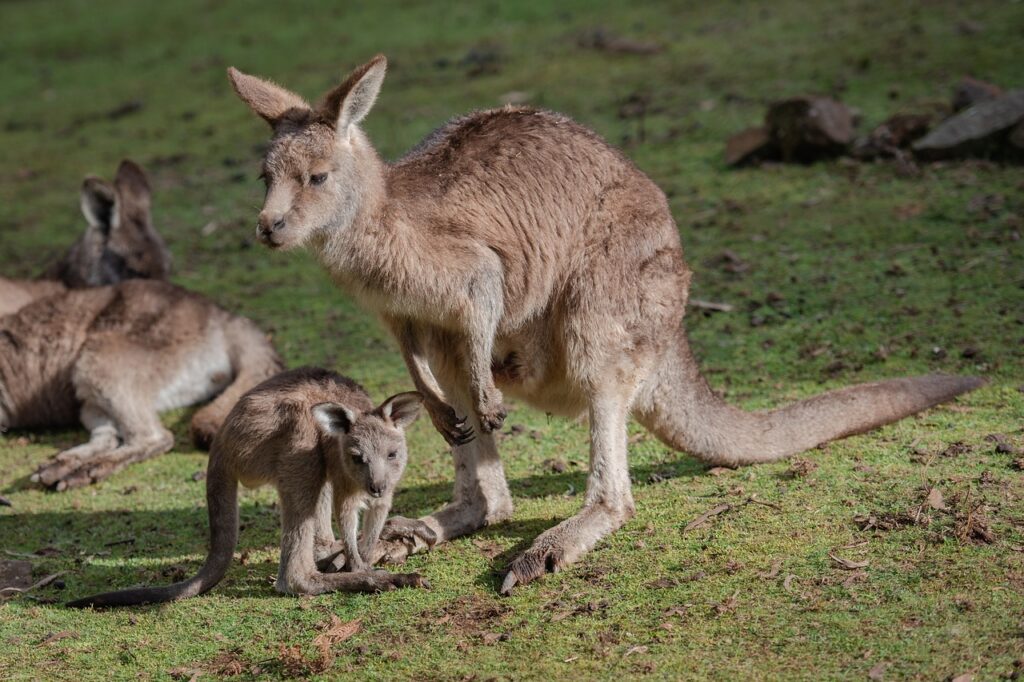
Scientifically, we classify animals into groups based on features they share with each other. Importantly, these classifications must rely on a very comprehensive set or list of characteristics, not just one or or two things they share in common. For example, mammals are distinguished from other animals by a set of features. These typically include hair or fur, a lower jaw composed of a single bone (called the dentary) that is not connected to the bones of the middle ear, and the ability to produce milk to feed their young. Beavers, kangaroos, and the platypus are all examples of mammals because they have these and other features in common. In contrast, hummingbirds, bullfrogs, and boa constrictors are not mammals because they lack these features.
We cannot be sure whether Castorocauda fed its young with milk, but its fossils show that it was indeed covered in fur. While this might seem to place it into the mammal category, it is missing several other telltale mammal features.
As described above, true mammals have a lower jaw made up of a single bone that is disconnected with their middle ear bones. However, the lower jaw of Castorocauda was more complex, with additional bones. Castorocauda’s middle ear bones attach to its lower jaw. (See the image in the section “Is Castorocauda a Rodent?”) This suggests that this animal is in fact technically not a true mammal.
Then What Is It?
There is another group of furry animals that also shares the unique features of Castorocauda, called Docodonta. We commonly find these creatures fossilized in dinosaur-bearing fossil sites. The skull structure and teeth of Castorocauda much more closely resembles that of other docodonts, such as Borealestes and Docodon itself, than any of them do to beavers or beaver-like animals. In fact, scientists place docodonts into a group of animals called mammaliaformes. This is the group that contains “true mammals,” as well as other animals that are similar to them, but are missing some of the key features.
Castorocauda is not a beaver. It is not a beaver-like animal or a rodent. It is a completely different type of animal.
The “Jurassic Beaver” Hypothesis is Completely Unnecessary
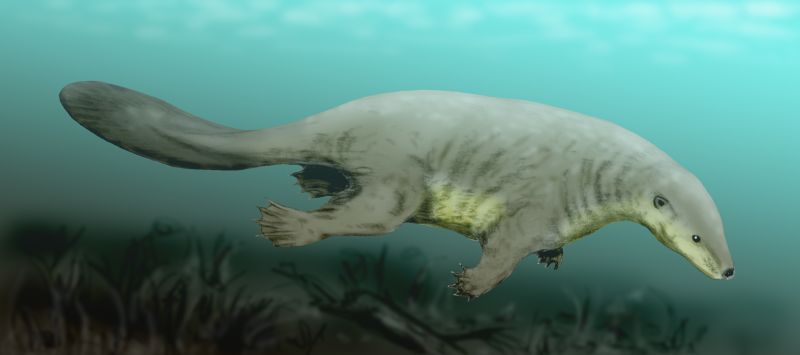
The “Jurassic beaver” hypothesis ironically does little to support a creationist view of earth’s history. Even if Castorocauda were truly a beaver-like animal, it would be an anomaly in an otherwise consistent trend. We find virtually the only known fossils belonging to modern groups of mammals within the Cenozoic rock layers. These are the layers above those containing dinosaurs. We also find Castorocauda and other docodonts only alongside dinosaurs. If Castorocauda were truly a beaver-like animal, why are nearly all other modern mammals absent from dinosaur fossil sites around the world?
Rodents and docodonts share superficial similarities because they occupied similar ecological roles in distinct, pre-Flood ecosystems.5 After all, animals that fill the same niche often avoid coexisting in the same regions to reduce competition for resources. Docodonts lived alongside dinosaurs, while rodents and other modern mammals thrived in separate pre-Flood ecosystems. It seems these mammal-dominated ecosystems were not preserved in the fossil record at all. This is possibly because they were located in areas of the pre-Flood world that were less conducive to fossilization. Thus, they were ultimately destroyed.
After the Flood, many creatures, including dinosaurs and docodonts, went extinct. This allowed rodents and modern mammals to then take over all compatible niches and thrive. Today, with 40% of modern mammal species belonging to Rodentia. It seems that the mammals’ take over was very, very successful.
Conclusion
It is tempting for many to link the humble Castorocauda with our modern flat-tailed wood-gnawers. But the similarity of one feature (its tail, in this case) is not enough to make the creature as a whole a true beaver or beaver-like animal. Virtually everything about Castorocauda, from its physical traits to its behavior, make it clear that it belongs to an entirely different order of extinct creature. One that is sadly no longer with us today.
The discovery of Castorocauda should remind us of the complexity of the fossil record and the diversity of life with which God filled the world that then was. Trying to make this animal into a “Jurassic beaver” is unnecessary and misleading, as it blurs a much more interesting and nuanced understanding of pre-Flood biodiversity. Instead of trying to force fit pre-Flood biodiversity into our modern biodiversity, let us marvel at Castorocauda as an incredibly unique part of God’s world. It is a reminder of a world that no longer exists. A time when Jurassic “beavers” swam in the shadows of the giant reptiles.
Learn More About Castorocauda
Footnotes
- Ji, Q.; Luo, Z.-X.; Yuan, C.-X.; Tabrum, A. R. (2006). “A swimming mammaliaform from the Middle Jurassic and ecomorphological diversification of early mammals“. Science. 311 (5, 764): 1, 123–1, 127. ↩︎
- Werner, C. (2009). Living fossils: Volume 2, Evolution, the grand experiment (pp. 174, 182). New Leaf Press. ↩︎
- Smith, C. (2021, February 8). “Was There Really a ‘Land before Time’?” Answers in Genesis. ↩︎
- Batten, D. (2011). “Living fossils: a powerful argument for creation
Don Batten interviews Dr Carl Werner, author of Living Fossils (Evolution: the Grand Experiment vol. 2).” Creation 33(2):20. ↩︎ - Wise, K.P. 2011. A closer look at Noah’s world: same time, different place. Answers 6(4):56-63. ↩︎

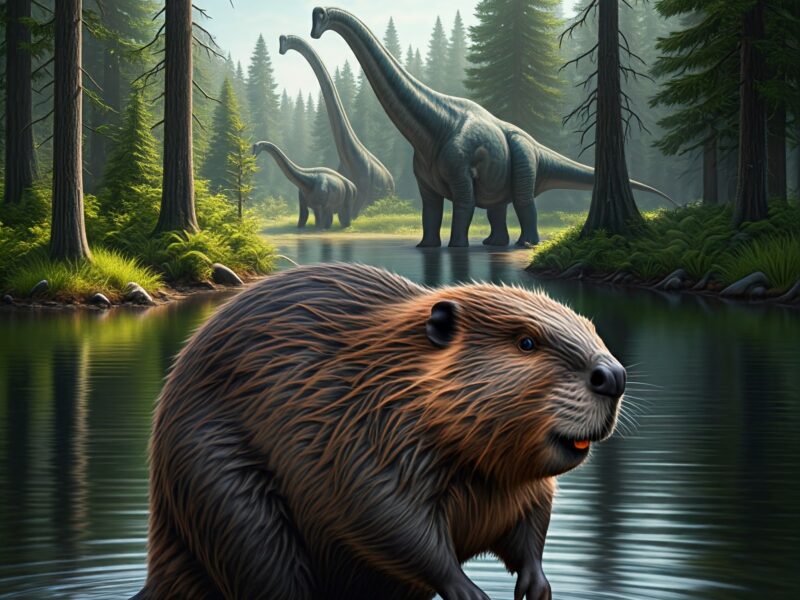





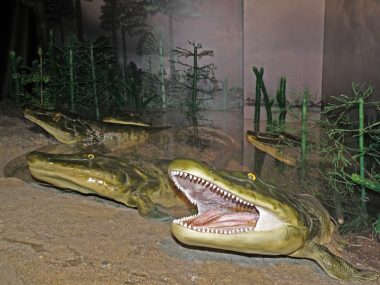




Another well written and researched article. I know how difficult it can be to point out mistakes among brothers. I appreciate the tone and willingness to talk about these subjects.
I always thought it was a beaver and that evolutionists were manipulating the data to put it in a different order. Thank God for clearing my doubts Ryann.
I have an evaluation of this paper that you referenced above in my second response to Dr. Joel Duff who responded below in the comments: https://youtu.be/WKkUBKVZTUs. Furthermore, I will be responding to the claims of this article in a point-by-point response on my website. For right now, I want to know one thing: are you one of that small group of YECs that accept “walking whales” and “feathered dinosaurs”–who are sympathetic to some of the evolutionary claims and interpretations? It’s crucial to my understand where you are coming from. God bless!
Hello Brian,
Thank you for reading my article. In response to your question, I do think we have good evidence that some dinosaurs had feathers, and that there were semi-terrestrial cetaceans, like Pakicetus, (though I am on the fence at to whether these cetaceans belong to the same created kind(s) as living whales and other cetaceans). These are not inherently “evolutionary claims” or “interpretations,” however, as a claim should not be ignored or given credibility based soley on its source. Rather, we need to look at the claim itself and compare it against both the historical data recorded in the pages of Scripture and scientific data available in the world around us. As far as your question goes, I don’t see any indication in Scripture that God could not have created semi-terrestrial cetaceans or dinosaurs with feathers. And I think the scientific evidence related to these things checks out as well. For more information on these two specific topics, I would suggest checking out the following articles on the Blog:
– A Whale of a Tale About Whales: New Paradigms on Whale Origins
– Feathered by Design, pt 1: It Started with a Feather
Thanks for getting back to me. Although I agree that we don’t know Scripturally if God created dinosaurs with feathers, and that there’s always a possibility of it, I don’t agree with the claim that there’s good scientific evidence in support of this. I think the claim that we have found “feathered dinosaurs” must rely on cladistic terminology which presupposes common ancestry & relies on the redefinition of terms like “birds”, “theropod dinosaurs” and even the word “feather” is being redefine as meaning the same thing as filament which are hairs because evolutionists believe that these “evolved” into feathers. What they are actually finding would be either whole birds or dinosaurs with filaments (hairs) but not feathered dinosaurs. I have two videos on my channel discussing this with a paleontologist from AiG: https://youtu.be/eGaA5NahMsI & https://youtu.be/B_8KKTlcyAs, both with Dr. Gabriella Haynes who’s an expert on the use of cladistic as well as the claim that birds allegedly evolved into dinosaurs. I haven’t done anything on supposed “whale evolution” but I probably will eventually. I would disagree with you on these not being inherently evolutionary claims. Most YECs and all OECs that reject evolutionary and theistic evolutionary claims reject these. The YECs who do are outliers among YECs and are often considered a radically small group within the movement. Now, if by “inherited” you mean _only_ evolutionists believe this, you might be right to some extent, but the ones that do either do so because of evolutionary presuppositions of common ancestry or are sympathetic to such presuppositions or claims. This is why it is evolutionists who primarily take such views and why nearly everyone else rejects them.
However, the reason I had asked my question originally was not to debate these issues with you. I would rather be debating evolutionists on these, and have, but, instead, I wanted to know where you were coming from on how you were approaching this and looking at this particular situation. There’s a guy that moderates for Standing for Truth on YouTube where I, too, am a moderator on who calls himself “paleologos” and so when I asked him this question he said that “New Creation”, which he also said he works for, had various views, but he did tell me that there was some, and I think him also, that took this viewpoint, but he wasn’t sure about you. Thank you for clarifying it. Have you taken the time to read my article response yet linked to a previous reply? Just curious. Thanks for getting back to me. God bless!
This article has now officially been responded to on my website. Here’s the article: https://www.christian-apologetics-101.com/post/the-living-fossils-debate-a-response-to-a-fellow-young-earth-creationist. Thank you and God bless!
I see no reason not to see this creature in a bigger kind. I don’t agree there was a beaver kind. they are just rats. There might be a rodent kind and this one is simply in a spectrum of diversity of the kind.There wwere likely few kinds on the ark.
Since you’ve done one on the Jurassic “beaver”, what other installments can we expect in this series? Cretaceous “ducks”? Protoavis?